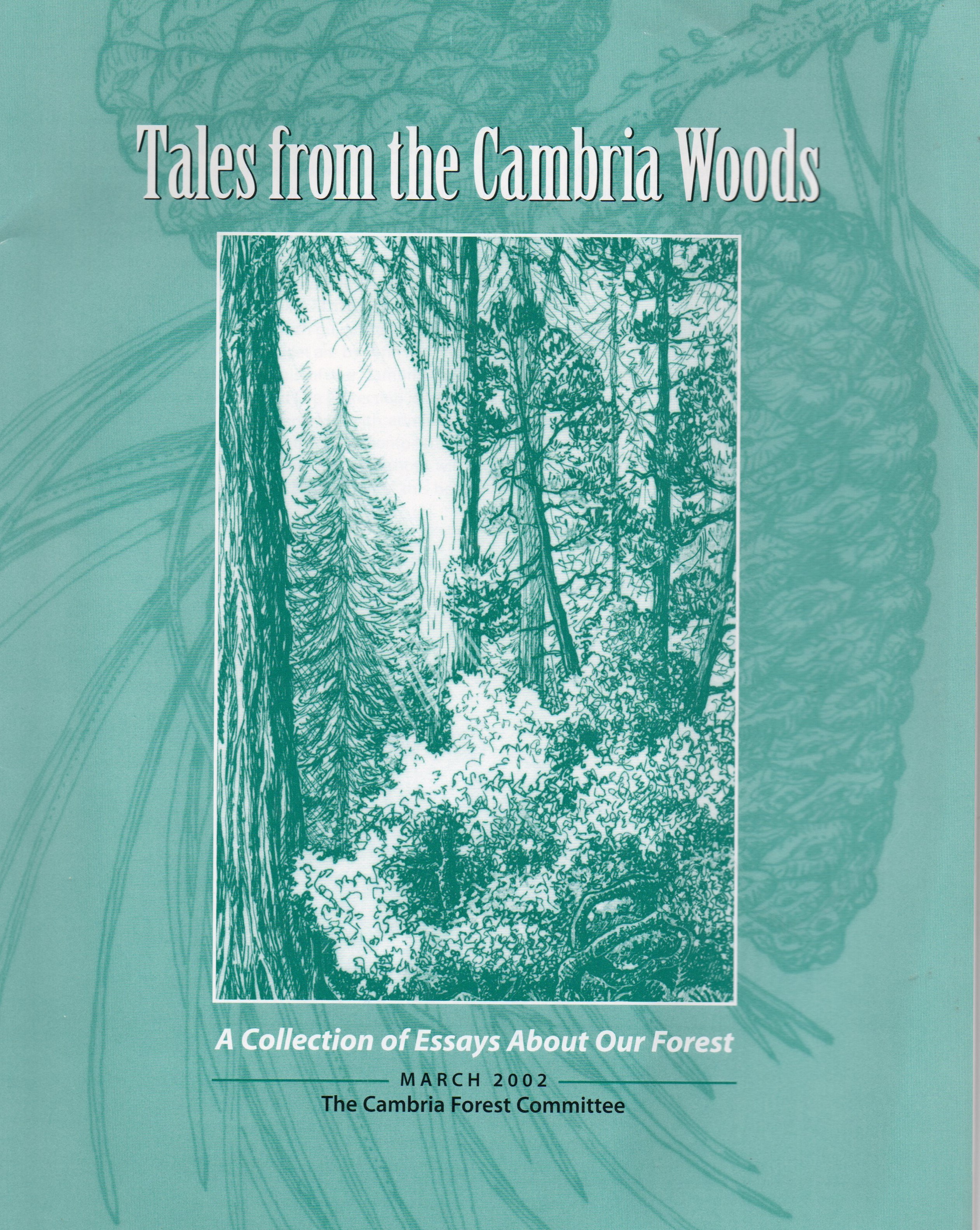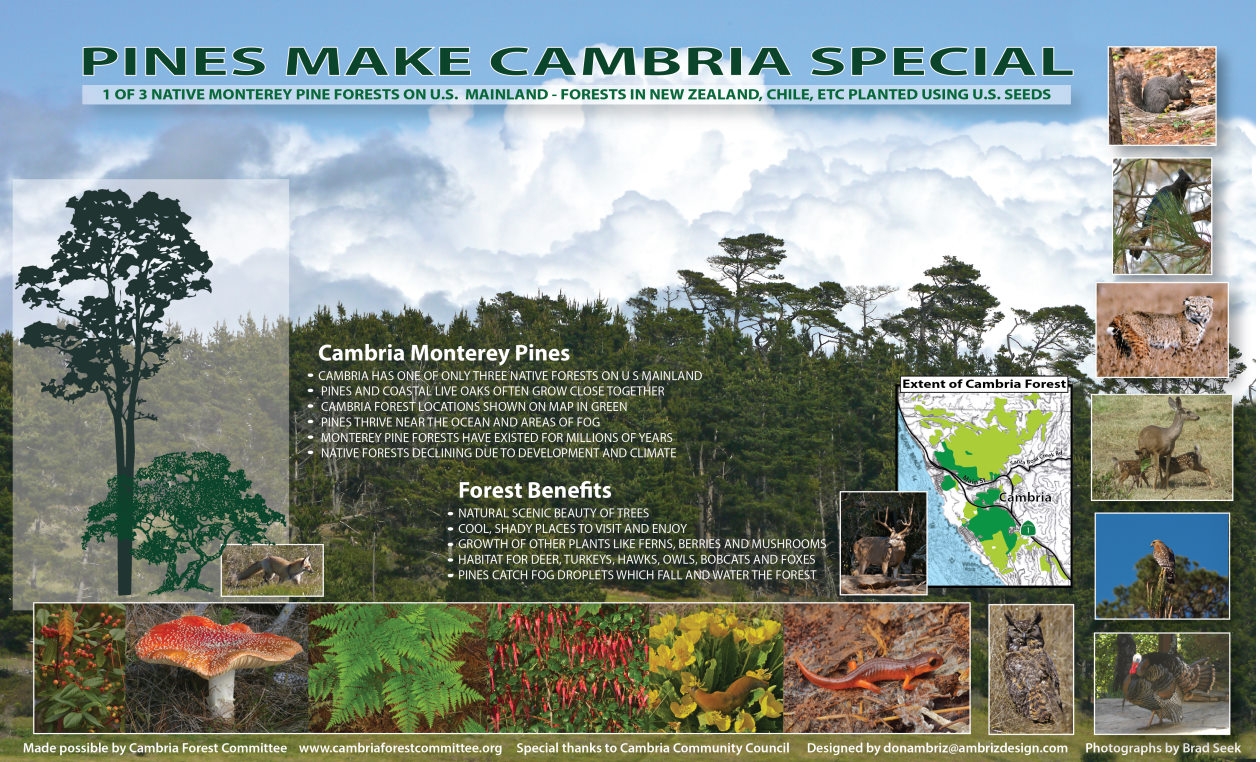Oak Moths have denuded Coast Live Oak trees in some neighborhoods in Cambria. Paul Williams of Williams Pest Management provided advice about caring for oak trees through this infestation. See the September Meeting Report for details.
September Forest Committee report Director Farmer Summary
The main message is: although the trees have few if any leaves, they are alive and should recover in the coming months. Do not trim branches until after leaves regrow and you are able to determine which branches are dead.
Here’s more information:
Cambria Forest Committee continues to work on recommendations and monitoring of Cal VTP projects in and around Cambria. CFC is also working with Cambria CSD and Fire Department to foster conservation on conservation-easement protected lots.
Representatives of the Upper Salinas-Las Tablas Resouce Conservation District and other partners are working on a Project Specific Analysis, Regional Ecological Strategy (SLO-RESIL), for 88,000 acres along the Central Coast. Learn more about it here.
Tree video
Want to learn more about trees? Watch this video on Common Trees of the Los Padres National Forest. ForestWatch’s Director of Conservation & Research (and resident plant nerd) Bryant Baker describes them and shows how to identify them.
Forest Committee meetings
Cambria Forest Committee welcomes all to its monthly meetings, the second Friday of the month, 10 am on Zoom. Lively discussion of current issues, such as the fuel reduction projects. Email CFC Chair Crosby Swartz for the link, crosbyswartz99@gmail.com
Tales from the Cambria Woods
In 2002, the Cambria Forest Committee collected columns about the forest that had been published in The Cambrian and published the collection as Tales From the Cambria Woods. Twenty years later, it’s time for Volume 2. What would you like to say about the forest? 1,000-1,500 words, although that’s flexible. Writers and artists, please contact the Forest Committee for more information.
Cambria Monterey Pine signs
Invasive Weed Guide
Every Cambrian lives in the forest. We share our landscape with the trees and wildlife. Donate now to the Forest Committee to defray publication costs of Cambria’s Guide to Invasive Weeds, $15 (or more), contact christine.heinrichs@gmail.com.
Weeds are taking over landscape and crowding out native plants. Weeds hurt the forest by changing the habitat for wildlife. they increase fire danger. Pull weeds on your own property and help your neighbors. Every weed you pull reduces the number of seeds that will sprout on your property next year. Connie Gannon, executive director of Greenspace–The Cambria Land Trust and a member of the Forest Committee’s board, wrote about it in The Cambrian.
Learn more about Cambria’s Invasive Weeds by joining iNaturalist on your tablet or smart phone. Find the Rogue’s Gallery of Weeds and add your personal Worst Weed of Cambria. contact us at forest@cambriaforstcommittee.org with questions.
Download a copy of the Forest Committee’s brochure, At Home in the Forest, from the Frequently Asked Questions page.
Read the Community Wildfire Protection Plan posted under Forest-Related documents.
Volunteer to help the Cambria Forest Committee preserve Cambria’s Monterey Pine Forest.
Would you like to pull weeds, get rid of those nasty invasives that are creeping into our forest? Do you have computer skills? Would you like to use your artistic talent to create informational materials that convey the forest’s beauty? What is your talent? The Forest Committee welcomes you. Contact us at forest@cambriaforestcommittee.org and we will put you to work.
What are TDCs?
In 1985, The Land Conservancy was selected as the implementing nonprofit agency as required for government agencies to operate the Transfer Development Credit Ordinance. Following the completion of the Cambria-Lodge-Hill Restoration Plan, the TDC program received seed money from the state Coastal Conservancy to begin retiring lots. Lots retired from development are permanently restricted to open space and their development rights can be transferred to areas in Cambria where development is better suited and which will have a reduced impact on the health of the native Monterey pine forest. The County directs landowners who wish to exceed present county development standards to The Land Conservancy to purchase TDCs. That money is then used to purchase additional undeveloped lots and retire them from development, and the cycle continues.
In March 2016, after a four year hiatus, the Cambria CSD accepted 52 lots from the Land Conservancy. That allows the program to continue. Read the news report here.
The CSD established a Buildout Reduction Committee to move the program forward. The committee’s report is posted at the link above.
Forest Management Plan
The Organizational and Funding Options for Implementation for the Cambria Monterey Pine Forest Management Plan is posted on the Forest-Related Documents page. The Forest Management Plan is posted here.
This site contains information about the Cambria Forest Committee including
The Committee meets on the 2nd Friday of the month at 10 am. Everyone is welcome to attend.
Contact the Committee by e-mail: crosbyswartz99@gmail.com
Contact us by mail at: Cambria Forest Committee PO Box 23 Cambria, CA 93428
Next Meeting: November 14, 2025, 10 am, remotely via Zoom. Email for link to participate. Open to everyone.




